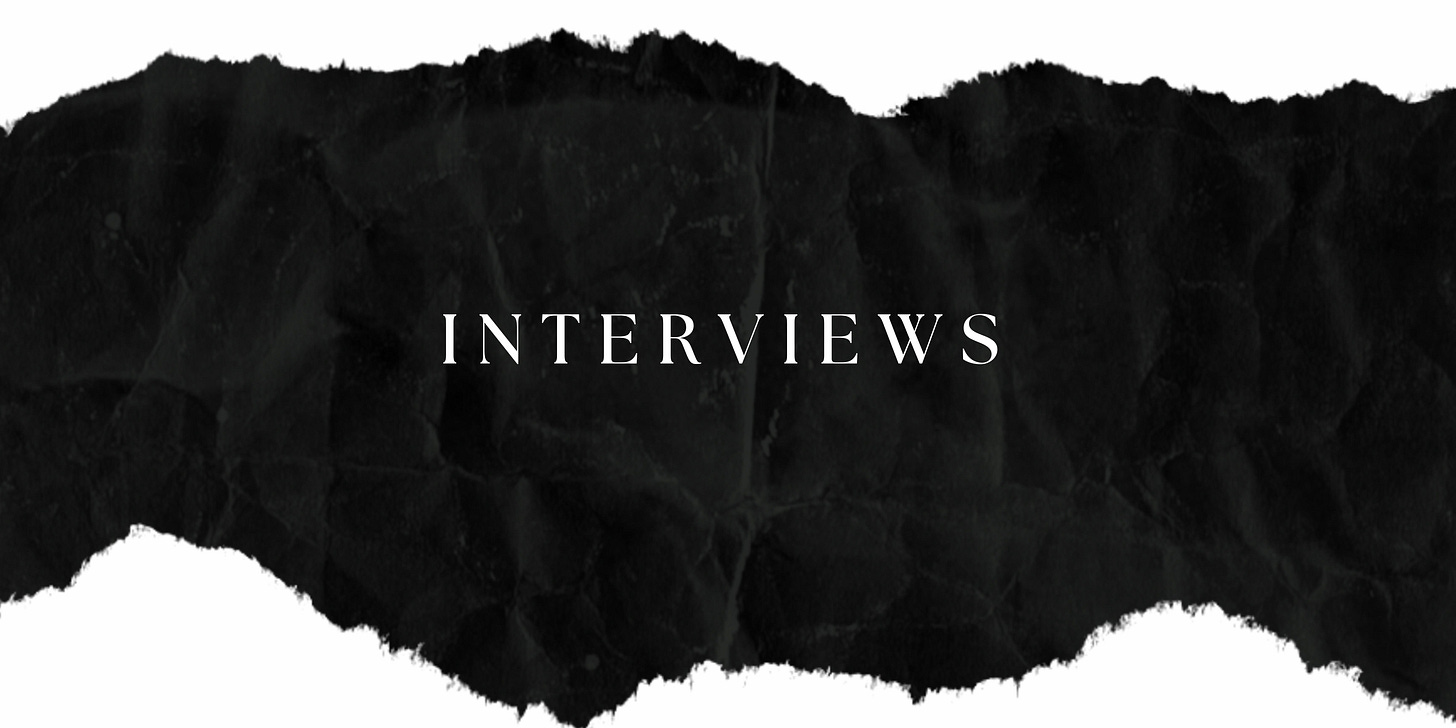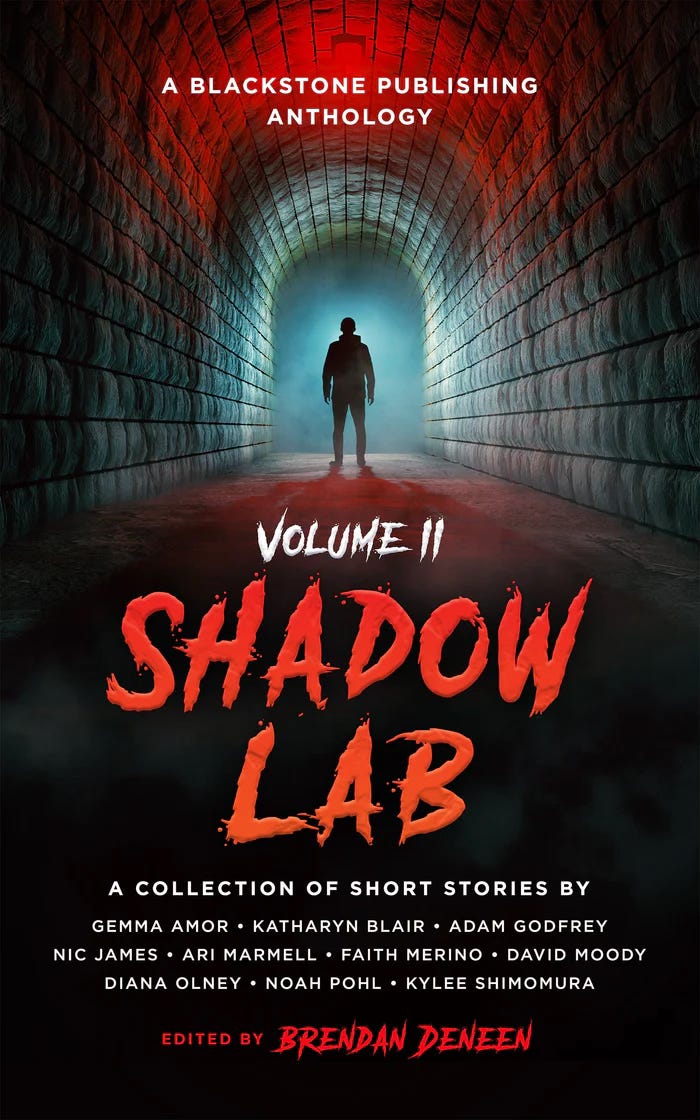Olney is the dark fashion columnist for Memento Mori Ink.
Would you like to write for Memento Mori Ink?
Non-fiction - ongoing - Articles $20 for 200 words, Essays $40 for 300 words, Reviews (anything but book reviews) $30 100-200 words , Columns/Op-Eds $35-$40 500 words max - Memento Mori Ink Magazine seeks thought-provoking, non-fictional articles that explore the darker aspects of life, death, culture, and the human experience. We are particularly interested in pieces that delve into:
Mortality and Death: Essays that examine cultural, philosophical, or personal perspectives on death and the rituals surrounding it.
Gothic Culture: Analysis of gothic literature, art, fashion, and the lifestyle that embraces the macabre.
Dark Aesthetics: Articles exploring the beauty and significance of dark aesthetics in various forms of media, including art, film, and music.
True Crime: In-depth, well-researched articles on historical or contemporary true crime stories, with a focus on lesser-known cases.
Psychological Exploration:** Essays that analyze the darker side of the human psyche, such as fear, grief, or the allure of the unknown.
Diana Olney is an author, poet, and comic series creator based in Seattle. IMO, she is one of the best marketers in the dark short story world. Her social media posts are consistent, intriguing, and leverage her incredible photogenicness.
You can find her short fiction in anthologies by Crystal Lake Publishing, Hellbound Books, Small Wonders, and upcoming in Chaotic Cupids and Shadow Lab Vol. II. She’s created a comic series called Siren’s Song, and she describes it as “in the horror comedy wheelhouse and a ton of fun.”
Let’s get to know her better!
AF: Introduce us to Diana Olney! What should readers know about you and your career path?
DO: Words are my world, so the best way to get to know me is through them—which is well timed, as I have many new tales on the way! In July, a poem that is very close to my heart will be featured in Chaotic Cupids, a multi-genre anthology edited by Kevin J. Anderson including both prose and poetry (all of which is phenomenal!).
Then, in the fall, my most precious nightmare will come true—and hit bookstores nationwide in Shadow Lab Vol. II, a fantastic new horror anthology from Blackstone Publishing.
My contribution, a coming-of-age tale turned horror story called “Insatiable,” has been my (monstrous) baby for the last six months, so seeing it come to life is an incredible feeling. And the TOC on this anthology is absolutely brimming with talent. Mark your creepy calendars for September 30th—you won’t want to miss this one!
AF: Tell us about your inspiration for your new comic book series.
DO: When my publisher said he wanted a horror comic series (specifically a “creature feature”), I knew I’d whip up a weird and wild one. When it comes to horror, I have always been drawn to creatures that spend more time in the shadows than the spotlight. And of course, the lesser-known beasties tend to stand out more, which is an important aspect to keep in mind in a time overrun with vamps, zombies, and werewolves. My choice of sirens was pretty instant—there aren’t many stories, comics, or even movies about them—outside of a flick called Killer Mermaid that is just as laughably B-grade as it sounds. And because I see comics as a fitting medium to unleash my lighter, zanier side, I put my seafaring femme fatales in a glam rock band and set them loose in the eighties! When the Sirens aren’t diving into the dark depths, they’re rocking out on stage and snacking on fanboys. And thanks to the exceptionally talented hand of my illustrator, Beth Hammer, they look spectacular doing it!
AF: You’ve recently become the dark fashion columnist for Memento Mori Ink. How did this happen, and what does the job entail?
DO: My position at Memento Mori was a case of amazing serendipity. Initially, I reached out expecting an internship, and before I knew it, MM Ink’s brilliant editor-in-chief, Lisa Vasquez, who had seen my reverence for gothic style online, was asking if I’d like to be their dark fashion columnist. My answer, of course, was: hell yes! Before I chose to pursue writing full force, I was deep into fashion, so it truly felt like two passions seamlessly coming together. Since then, I’ve had a ton of fun cooking up dark-chic articles along with themed photos. I’m also very fortunate to have several friends who are professional photographers, and my latest article, “Dressed to Kill: The Treacherous Side of Fashion History,” was a blast to write and shoot with my talented buddy, Seattle photographer Kurt Clark.
AF: Do you have any advice for other short story writers hoping to mirror your success? And can you define what success means to you?
DO: The first thing I would say is, dedicate yourself fully. Stephen King once said that in order to become a “decent” writer, you have to write 4-6 hours a day, which sounds bonkers at first, but the closer you get to that, the better.
And be tenacious. Especially when it comes to rejections. Take a beat to process disappointment, but don’t let it drag you down. Instead, put those feelings and energy back into the work.
That’s what I’ve always done, which has benefited my mindset, my craft, and my career. I’m no King, and I don’t expect to be, but when I reflect on how far I’ve come in the last year, it’s incredibly fulfilling. Not so long ago, it seemed like I was always the “Almost Girl”—making the second or final round of submissions with great pro-rated markets, just to have that carrot of success snatched away at the last second. And now, I finally feel like I’m moving up and onward. But at the end of the writing day, success to me doesn’t necessarily mean getting into all my dream publications. It’s knowing that the passion in my words is shared by others.
AF: What are your best suggestions/tools for mastering the craft of short dark fiction?
DO: #1: Read and write every day, even if you’re half asleep doing it.
#2: Become a proficient self-editor. It might sting a bit, at first, but the more comfortable you are cutting extra words and sculpting narratives, the sharper your prose and stories will be. A shortcut to that brings us to:
#3: Write flash fiction. Since you have to write within such short parameters (typically only 1200 or 1000 words), writing flash is a great way to give yourself a crash course in revising, as well as hone in on your storytelling abilities. It’s also a fun way to explore new genres and writing styles with a lot less pressure.
AF: Why dark fiction? And who are your influences?
DO: Myriad reasons! As a 90s kid in Seattle, I was raised on horror films and grunge rock, and fell in love with masters like Tim Burton and Anne Rice very early. But more than anything, I believe that darkness can be a beautiful, transformative place to explore. The authors I enjoy most aren’t afraid of pain or trauma—they open those dark veins straight into their work. Even in fiction, I can feel how real that pathos is on the page. And whether reading or writing, those are the stories that stick with me. Elizabeth Hand and Gwendolyn Kiste are two shining examples of authors who render their darkness very poignantly. I have many more influences, but over the last year, the (supremely talented!) authors Jack Skillingstead and Richard Kadrey have been both inspiring and supportive. Jack and I have even come up a nickname for our darkest, most personal tales—we call them “Wound Stories.”
AF: Do you attend cons, and what is your opinion on them? (And are you going to any in the future?)
DO: I’ve actually never attended a con, but I hope to, in the not-too-distant future! With two kids (four if you count my two magical black cats, who are literally my shadows), and a lot of deadlines, travel is tough for me, but I would love to go to Stoker Con one day.
AF: What’s next for Diana Olney?
DO: Writing “Insatiable” for Shadow Lab Vol. II was the definition of a labor of love—a long, captivating, all-consuming write-a-thon ending at a 11,000-word behemoth of a story. I told myself I’d take a break afterwards, but for me, when and what I write isn’t so much my choice as it is the muses. When inspiration strikes, I’m at their mercy, to the point where I basically become a conduit for characters and narratives. But even when it’s exhausting, I can’t complain. The creative fire that fuels my days and nights is what I live for, and when the words flow unhindered, it truly feels like magic. In the last month, I’ve poured around 13,000 words into several new poems and stories. Meanwhile, issue two of my comic series is currently being illustrated, and I cannot wait for the releases of both Chaotic Cupids and Shadow Lab Vol. II. Long stories shorter: I do much of my writing in the shadows, but the future has never looked brighter!
For those interested, new release updates will be all over my website https://dianaolney.com and
IG dianaolneyauthor.
And if you’re a comic fan, there are signed copies of Siren’s Song available on the site as well : )
Did you enjoy this interview?
If you can’t join a paid tier, perhaps buying me a coffee would be easier.
I offer my content for free, but caffeine helps. https://ko-fi.com/angeliquefawns12932









